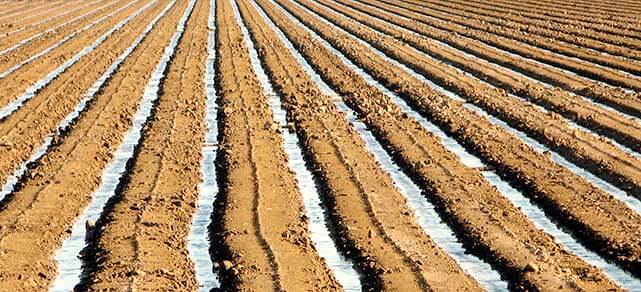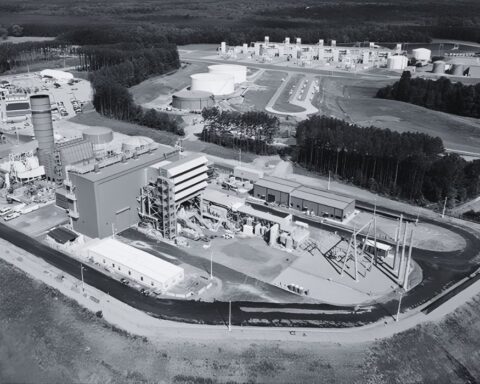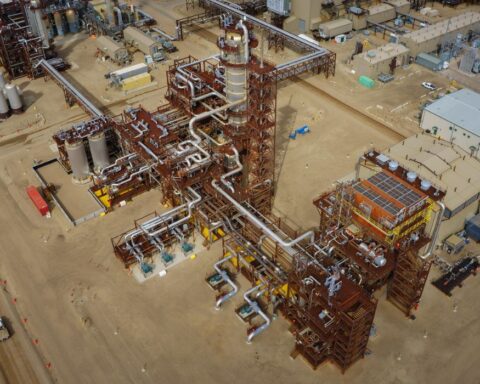The violent water-challenged world of Mad Max may make for exciting movies, but a future driven by global wars over water shortages is an unlikely scenario, says water resources engineer Janos Bogardi. In fact, he sees water for agriculture as a largely unifying factor among developing nations in Africa.
“[Munther Haddadin, Jordan’s former minister of Water and Irrigation] said once, ‘Water does not ignite—it is used to extinguish fire.’ This [is] really very wise,” says Bogardi, who has spent 40 years working in water resource management.
“I’m not saying there is no conflict, and the conflict may turn violent if you go on a lower scale to farmers who have to share a well,” adds Bogardi, senior fellow at the Center for Development Research at the University of Bonn, Germany, and senior advisor at the Global Water System Project. “But not nations, because they have more options, they have more at stake.”
The Nile Basin Initiative, for example, has successfully brought together Burundi, Democratic Republic of Congo, Egypt, Ethiopia, Kenya, Rwanda, South Sudan, Sudan, Tanzania and Uganda for joint planning and management of water and related resources in the region.
Water use tradeoffs
Although Africa has a wealth of water resources, they haven’t been exploited productively on the continent as a whole. By the year 2025, predicts the World Wildlife Fund, nearly half of the projected 1.45 billion population in Africa will experience water stress or scarcity if nothing changes.
The impacts of climate change, too, will be increasingly compounded by more people and fewer natural resources—and a more extreme hydrological cycle, says Bogardi. “Even though we have the same amount of water on an annual basis, we may have worse distribution, more droughts and more floods. More mouths to be fed, and more variable occurrences of water,” he says.

Expanded water storage in developing African nations will be important, says Bogardi, such as smaller farm facilities to hold water for emergency cattle and livestock needs and crop watering, preventing overreliance on big reservoirs. Also vital is investing in power and technology—such as digitally measuring soil moisture—along with growing affordable and culturally appropriate foods.
Ideally, meeting these energy and agricultural needs across developing countries’ borders offers the opportunity for new partnerships with beneficial win-win situations—but the transitions required in many regions will be complex. The decision to use water always involves a tradeoff somewhere, says Bogardi.
In sub-Saharan Africa, for example, the Zambezi River fills two of the world’s largest reservoirs, the Kariba and the Cahora Bassa, which are used for hydroelectric power. What has been done to the Zambezi River, says Bogardi, has effectively rendered it no longer a natural river, as it now releases water according to a manmade regimen rather than a natural one.
Because this region of Africa already has a relatively stressed food security situation, “with the predicted population increase, plus the potential negative impacts of climate change, you will have to be very careful to make reform and changes without deteriorating your output,” he says. Ideally, using more water for agricultural needs would not mean losing either hydroelectrical power or the income it generates—and vice versa.
The irrigation equation
Currently, only 5 per cent of the arable land in Africa is irrigated, the lowest percentage in the developing world, according to the Food and Agriculture Organization of the United Nations (FAO), compared with 41 percent for Asia and 20 per cent for the world. Transitioning from rain-fed agriculture to irrigated agriculture can mean a boost in efficiency and production, says Bogardi, but the transition is not a simple task.

Although irrigation is an ancient practice in some parts of the world, imposing it on cultures can have serious backlash, especially in areas where land ownership and farming practices passed down from one generation to the next are deeply valued. In the 1960s, ’70s, and ’80s, a number of such development projects in Africa did not bring the anticipated results, says Bogardi, partly due to lack of buy-in by people not ready for such a major cultural shift.
In addition, all irrigation is not equal, and the amount of needed investment varies depending on the scale of the farm (such as individuals vs. corporations), as well as the profitability of crops. For cheap staple foods, imprecise flooding is common, for example, while on South Africa’s high-value wine farms, elaborate drip irrigation systems pipe water directly to each individual stem via computer-based distribution.
“It takes a lot of time to build this infrastructure, to fund this infrastructure,” says Bogardi, so other activities need to go hand in hand, such as focusing on drought-resistant crops, or diversifying agricultural production for small-scale farmers to provide income.
But Bogardi says he’s optimistic about making this transition in African agricultural practices as long as there’s deep discussion about irrigation with traditional farmers. The people have to see the potential benefits, he says, and be willing to learn how to work with new infrastructure and means of production, such as bringing water to the fields. “It can be done, and I believe it will be done,” he says.
The water diplomat
Born and raised in Budapest, Hungary, Bogardi has been fascinated with water from an early age. He learned how to swim in the Danube River, along with lessons about the nature of water and life. “You learn that water has power,” he says. “You cannot swim against a stream, so you have to navigate your body not to be washed away.”
In 1970, a massive flood hit Hungary. The storm lasted 40 days and was said to be a once-in-a-thousand-years occurrence. Bogardi, freshly minted as a civil engineer at the Technical University of Budapest, was assigned to go to the Tisza River, the biggest tributary of the Danube, and measure its discharge. The close contact with such an extreme destructive force captivated him and solidified his professional course, he says.
“To see that humans and water interaction is as much as life, as much as death,” he says. “It is really a symbiosis. And this event shaped my whole career in that I was curious to learn more and more.”
Fueling our future
Although water is a revolving, or renewable, resource, Bogardi says that how we use and treat water does have physical and social limits.
Investing wisely in natural resources like water for agriculture will pay dividends that go far beyond helping to feed hungry mouths in developing nations, he says, emphasizing that sustainable, water-friendly farming is equally necessary in developing countries to revitalize human dignity.
“This, I believe, is a very essential thing, that people should be given the chance to feel proud that they are able to get their own food, whether they work somewhere else and buy it or they produce it,” says Bogardi. “But to make people dependent on [food] aid is not a sustainable way to deal with society. And certainly not with human dignity.”
This article originally appeared on Future Food 2050.







